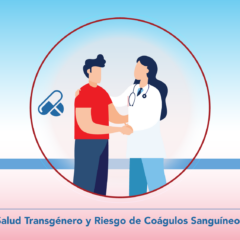Published on
Risk Factors | Transgender Health and Blood Clots
Doctors don’t always know why blood clots develop. Some people have a higher chance of developing a blood clot than others. There are several risk factors that can raise the risk of a clot:
Cancer – People with cancer are more likely to develop blood clots than people without cancer. Cancer itself increases your risk of getting a blood clot, and so do the treatments for cancer, including surgery and many chemotherapy drugs.
Genetics – Genes are the building blocks of life and are the code to how our bodies are built. They’re passed down from our parents and make us unique. Sometimes, genes can change or can cause problems. Abnormal genes can increase the risk of having a blood clot – but scientists are studying genes and blood clots to find new treatments for clots.
Hormone Therapies – Birth control pills and other hormone treatments (like gender-affirming hormones) can raise a person’s risk of thrombosis. However, the risk is small. Taking testosterone hormones isn’t known to cause blood clots but taking estrogen hormones can increase the risk of clots.
Not being active – People who aren’t active are at risk for blood clots. People who are not able to move, such as patients in the hospital or on bed rest, are especially at risk. Even people who are active can be at risk if they sit for a long time, like on a long plane ride.
Obesity – Being overweight or obese doubles your chance of developing blood clots. Eating healthy foods and getting more exercise can help lower your weight and lower the risk of blood clots.
Smoking – Smoking increases your chance of blood clots and many other health problems. If you smoke, talk to your doctor about quitting.Surgery – Your risk for developing a blood clot is higher during and after surgery. To prevent blood clots after surgery, some patients are temporarily placed on blood thinners and wear compression socks.



